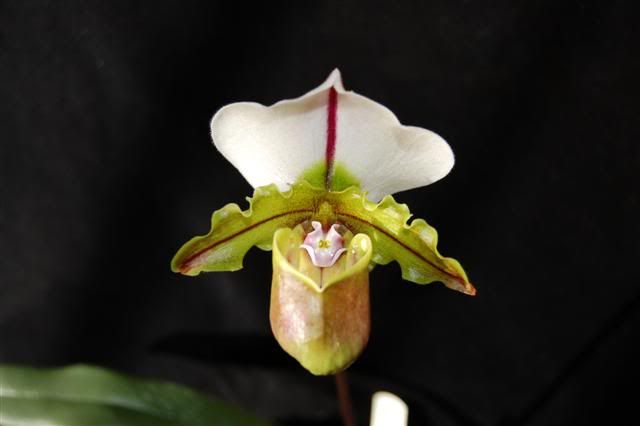This may be a valid argument, today, when the "purity" of a species can be an issue, but I doubt this discussion would have even been held in 1890, when Paph Bruno was registered. The fact that the plant has been registered as Paph Bruno, shows there was no intent on the part of the hybridizer to defraud.
What sort of records would you have breeders maintain? Is a species still pure when a cross is made with plants of the same species from two separate geographical areas or from two different forms?
Why would you infer that breeders of hybrids care nothing for the accuracy of records?
Agreed that this was not a concern in 1890. Probably not even till the 1950's or later when conservation (and a clamp down on collection of wild stock) became more of a concern. Also I did not suggest that fraud was the primary motive of near species hybridization.
It seems that the bulk of records are maintained on pot tags which don't weather well or get lost pretty easy. How many posts on this site alone do we see for identification aid of a NOID. Also geographical sources are very rarely tracked. I'm as bad as most I wager, keeping most info on tags, in my head, or in Troy Meyers computer. It also appears to this day that geographical documentation is often purposely falsified (although for sometimes different reasons than in 1890). Maybe in the near future some type of DNA analysis will become cost effective.
In the more extreme cases some purists feel that an organism (of any kind) ceases to represent the species when removed from its natural range. Given that a species designation really is an arbitrary division, I guess we can argue (and have several times to date) whether "purity" is maintained with inter form or varietal crosses. It depends on motivation and how desperate you are to maintain a given species (for example look at the recent history of the American chestnut). I feel, IMO, that species collection purely for stamp collecting, or AOS quality awards, is a not an especially prime motivation to maintain species "purity".
The quality of a parentage record has little to do with the present-ability of a pretty hybrid flower. It really is just arbitrary proof of a good looking creation that is deemed award-able. Really more useful as something like a patent document. For some breeders who maintain scrupulous records it could be used as a road map for recreation of certain concepts. But if you look at what has happened with Catts, Dendrobiums, and Phales (especially since mericloning) the diversity of shape color form really has homogenized the genera into gross grouping of color forms. Names are virtually meaningless, and records are not kept for what I bet for 99% of plants produced and sold. Records are just not important enough to be included with these plants.
The vast amount of undocumented plant material is like anti-records when it starts getting mixed into collections of conserved material. Things are a little slower for Paphs than the above 3 genera since they just haven't made it into mass retail like the big 3, but mistakes have been made over the last 200 years, and priorities have changed a lot too.
I've often advocated something like the Species Survival Plan system developed by the Association of Zoos and Aquariums for tracking and record keeping of slippers. But this takes a lot of cooperation (difficult with the 200 year history of competition in the orchid world). And in many cases the cat is out of the bag so to speak with all the undocumented captive produced species plants out there.
Going full circle, back to the chestnut example, the only surviving American chestnuts will ultimately never be 100% American Chestnut, but along the way we will be happy to have something "mostly" American chestnut rather than nothing at all. So if I was faced with spicerianum becoming extinct in the wild, I guess I should be glad (truly) that Paph Bruno will still be there for us.















































